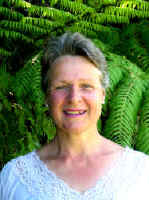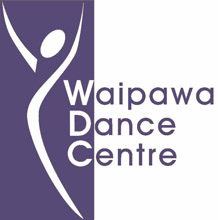HOME | TIMETABLE | BALLET | CONTEMPORARY | TEACHER PROFILES | GUEST COURSES | CONTACT US
Ballet
with Esther Juon-Veitch
Saturday Morning Children's Classes
The idea is to make the classes simple and easy to follow. Everything will be taught from a bio-mechanical point of view and you will find out why you do a movement, what it is for and what it will lead to eventually. So a ballet class will not have to be a mystery where you simply follow and learn by copying. The aim is to for you to discover the range of your own movement and what your body can and cannot cope with.
What are the Children's Ballet Classes about?
The children's ballet classes are planned for Saturday morning and the children need to be 7 years old to attend these classes. We will try and grade the classes by age. The children will be following a structured class tailored to the children attending this class. The aim is to introduce the children to ballet and awake the love of dance in them.
Adult Ballet Classes
To give an introduction to ballet, establishing basic class discipline, learning to share space, time and attention with other children. The classes aim at developing an understanding of the structure of classical ballet and most importantly, develop the love of dance and music.
What are the Adult Ballet Classes about?
The adult ballet classes are open to all ages over 14 years old. To start with the classes will be graded by age. Everyone will attend a beginner’s course and then the classes will be graded, Grade 1, Grade 2 etc. There will be a proper structure to the course of learning, which will allow you to work up to your full potential.
Esther's Ballet Philosophy
The idea of ballet is magic to most young children and especially
little girls. Entering the world of ballet through a “Mother and
Toddler” group should be a special experience of entering a world of
fantasy. Through storytelling, exploring simple movements, through games
and play the children get gently introduced to the social skills
required to attend a ballet class when they are a bit older. This class
offers the opportunity for the child to gain confidence, share time,
space and attention with other children and ultimately let go of mum so
the child will form her/his first friendships and interests without mum
being there. This process will take time and each child will complete
this step in her/his own time.
The bones in children in this age
group are very soft and vulnerable to damage. Doing a “ballet class”
with the “legs turned out” at this stage, is not a possibility as
working in turn-out will need much more understanding and being able to
concentrate. The concentration span of these children is very short and
so exploring natural movement through music, rhythm, play and
improvisation is a much safer option.
Once the children start
Kindergarten and school the training changes to gradually introduce very
basic ballet steps but again this has to be introduced carefully through
a Syllabus called Pre-Syllabus. This is also the very first level a
child can explore the excitement of what it is like to take a ballet
exam. They experience the fun of it and that the classes lead to a
reward and recognition for the work learned and performed during the
year. The children receive a badge for their work as well as a
certificate.
Then there are two more Exams available called
Pre-Primary and Primary. During these grades the children learn more
about ballet and putting the steps together into simple patterns. These
classes still have creative elements, play, music, rhythm and
improvisation and the children are invited to contribute with their
ideas too.
Esther will establish which would be the best level for
the young dancer to deliver an exam at the end of the year.
These
classes then lead into a real ballet class, now using all the basic
elements learned in the Pre-grades, building a movement library on which
the training of ballet will be based. The children move up through the
grades 1-5, taking on average one year for each level. When it gets to
Grade 3 two ballet classes per week are recommended and the children
need to start practising at home too!
After our dancers have
passed Grade 5 Ballet Exams the dancers can stay together in the same
classes, but the work has two streams called Grade 6 (no pointe work)
and Intermediate Foundation (starting pointe work). The actual work
stays the same for both groups but Inter/Foundation dancers will do the
last part of the exam on pointe and the Grade 6 dancers will perform
their work on demi-pointe which is half pointe and wearing ordinary
ballet shoes.
Needless to say pointe work is what every dancer
aspires to and most of our students will achieve this goal. For pointe
work the dancer needs to be very strong physically and have completed
the adolescent growth spurt. During the adolescent growth spurt the
dancer not only does a lot of growing but is emotionally on a roller
coaster. The dancer needs careful management during this period of
growing. They need plenty of sleep, good food and patience and their
training has to be adjusted to cope with the rapid growing. For these
reasons each dancer is assessed for “pointe readiness” individually
before such a step is taken.
There are three more levels our
dancers can achieve, Intermediate and Advanced 1 + 2. Passing these
higher Exam Grades allows the dancer gains points for entry to any
University.
My aim is to get all my dancers to achieve Intermediate
level because it will give them the entry qualification either into full
time dance training or entry into starting a teachers training course in
later life.
Our Adult dancers have the very same opportunities and
when I was teaching in the UK, 4 of my adults gained Intermediate level
on “pointe” and two of them went on to successfully pass Advanced 1.

Esther Juon-Veitch
see Teacher Profiles

